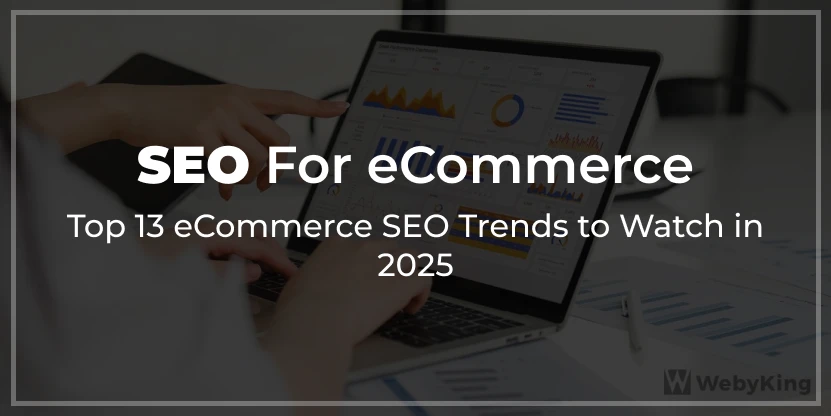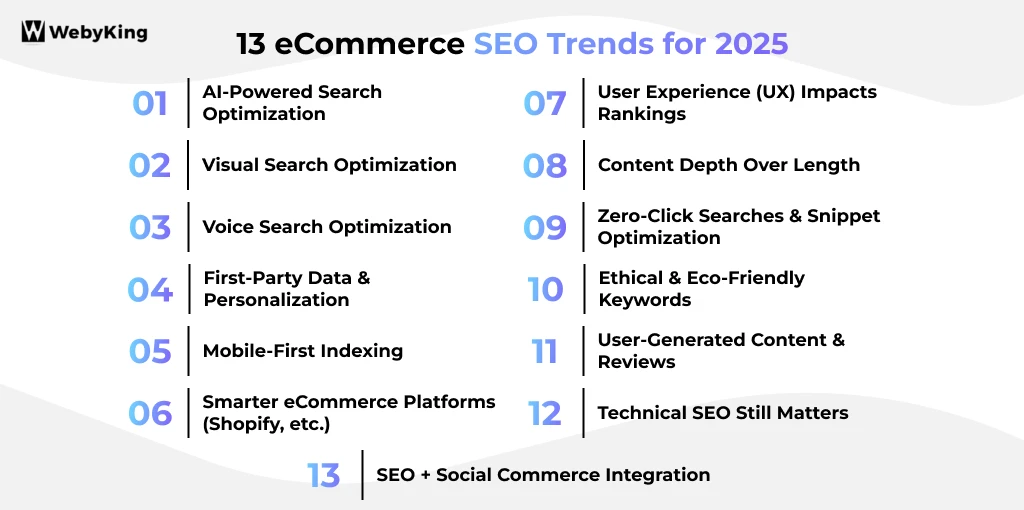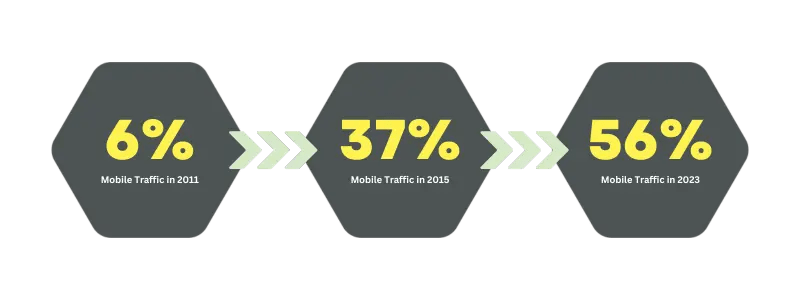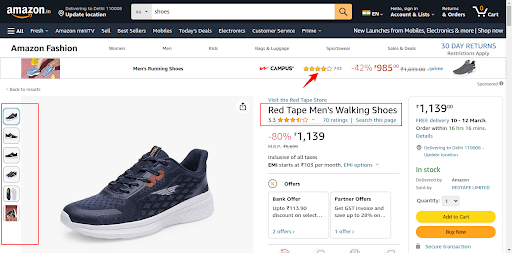Top eCommerce SEO Trends to Watch in 2025

- What is eCommerce SEO and Why It Is Important?
- Should You Hire an eCommerce SEO Expert or Do It Yourself?
- Top eCommerce SEO Trends to Watch in 2025
- 11 eCommerce SEO Best Practices in 2025
- How to Perform an eCommerce SEO Audit? A Simple Guide
- How Much Does eCommerce SEO Cost in 2025? A Complete Breakdown
- The Importance of Technical SEO for Your eCommerce Store
Get In Touch
The world of eCommerce never stands still, and neither does SEO. As online shopping continues to evolve at lightning speed, staying ahead of search engines trends isn’t just a nice-to-have -it’s essential for survival. Algorithms shift, consumer behaviour changes, and the digital marketplace becomes more competitive by the day.
For eCommerce businesses, this means one thing: adapt or risk being left behind.
Whether you are a seasoned online retailer or just getting started, understanding how SEO is changing in 2025 can give you a serious edge. From AI-driven personalization to voice search optimization and beyond, the strategies that worked last year might not cut it today.
In this blog, we’ll break down 13 of the most important eCommerce SEO trends to watch in 2025 – so you can future-proof your store, stay relevant, and continue turning clicks into conversations. But let’s start with the meaning first.
What is eCommerce SEO?
eCommerce SEO means optimizing your online store to rank higher in search engine results like Google, so more people can find your products when they search online.
It’s all about making sure your product pages, category pages, and content are easily discoverable by both search engines and shoppers. The better your SEO, the more organic traffic (unpaid visitors) you attract, without relying solely on ads.
Here are a few eye-opening reasons to take it seriously this year:
- 44% of people start their online shopping journey with a Google Search.
- Over 68% of online experiences begin with a search engine.
- 75% of users never scroll past the first page of search results.
- Unlike paid ads, SEO delivers long-term ROI with consistent, free traffic over time.
In short, if your products don’t show up when customers search for them, they’ll likely end up buying from a competitor who does. That’s why keeping up with eCommerce SEO trends in 2025 is more important than ever.
Major eCommerce SEO Trends for 2025
The eCommerce landscape in 2025 is dynamic, shaped by rapid technological advances and evolving consumer expectations. Here’s a detailed look at the trends defining the industry this year, presented with a mix of narrative, examples, and key facts to help you understand the coming SEO trends in eCommerce.

1. AI-Powered Search Optimization
AI is reshaping how search engines understand content. With tools like Google’s Search Generative Experience (SGE), results are no longer just ranked lists—they’re AI-generated summaries. That means you need to create content that matches search intent, not just keywords.
Let’s say you sell ergonomic office chairs. Instead of writing “Best Office Chairs,” go deeper. Think: “What to Look for in an Office Chair if You Sit 8 Hours a Day.” This aligns with how users phrase real-life queries.
Tip: Use AI tools like ChatGPT to brainstorm real customer questions and answer them naturally on your product and blog pages.
Why it matters: AI prefers useful, well-structured, human-like content. So writing like a robot? That’s so 2018.
2. Visual Search Optimization
Visual search is blowing up—especially on mobile. Shoppers are snapping photos to find similar products on platforms like Google Lens and Pinterest. If your product images aren’t optimized, you’re missing out.
Start by:
- Naming your images descriptively (e.g., “organic-cotton-tshirt-blue.jpg”)
- Using proper alt text for accessibility and SEO
- Adding image schema for Google to better understand what’s on the page
For instance, a customer uploads a picture of a boho-style lamp. If your images and metadata match, your store might show up in their search results, even if they didn’t type a single word.
3. Voice Search Optimization
“Hey Google, where can I buy eco-friendly yoga mats near me?” That’s how people are searching now. Voice search is longer, more natural, and often location-based.
To show up in these results:
Use conversational phrases in your product titles and FAQ
Include local info where relevant (store address, delivery regions)
Target question-style queries like “What’s the best hiking backpack for beginners?”
This approach aligns perfectly with local SEO services, especially if you’re targeting regional customers or offering local delivery.
Bonus: Add an FAQ section with natural-sounding questions and answers—Google loves it for voice results.
4. First-Party Data and Personalization
With third-party cookies going away, first-party data (collected directly from your users) is becoming gold. This includes browsing history, past purchases, and even wishlists. Use this to personalize SEO content and improve search performance.
Imagine this: A returning visitor lands on your homepage and sees “Back in Stock: Shoes You Loved.” That personalized experience not only boosts conversions, it keeps bounce rates low, which is an indirect SEO win.
Think about:
Personalized product recommendations
Dynamic landing pages based on user behavior
Location-based content using customer data
As said earlier, SEO isn’t just technical—it’s about building relevance for the user.
5. Mobile-First Everything
Google has officially gone mobile-first. This means it uses the mobile version of your site to index and rank pages. So if your mobile experience is lagging, your SEO rankings will too.

Key steps to focus on:
Ensure mobile pages load under 3 seconds
Use responsive design (one site that adapts to all screen sizes)
Avoid pop-ups or buttons that are hard to tap
It matters a lot because more than 79% of smartphone users have purchased their phone in the last 6 months. If your mobile store isn’t seamless, you’re not just losing SEO visibility—you’re losing sales.
6. Smarter eCommerce Platforms (Like Shopify)
Platforms like Shopify and BigCommerce are becoming more SEO-friendly by default. Shopify, for instance, now generates XML sitemaps automatically, offers editable meta fields, and supports schema markup. But don’t just rely on the built-in features.
Advanced SEO setups may require technical tweaks, theme customization, or structured data integration—this is where Shopify development services can add value.
Pro tip: Customize your product page URLs, optimize internal linking, and make use of structured data to stand out in rich results (stars, reviews, pricing).
7. User Experience (UX) = Better Rankings
Google now considers UX signals like bounce rate, session duration, and Core Web Vitals in its algorithm. If users leave your site quickly or find it hard to navigate, your rankings can take a dip.
Here’s what makes a good eCommerce UX:
Clear product categories and filters
Fast-loading images and pages
Smooth checkout process (preferably one-page)
Mobile-friendly layout
Quick win: Run a heatmap test on your product pages to see where users click, scroll, or drop off—and then optimize accordingly.
8. Content Depth Over Length
In 2025, it’s not about cramming 2,000 words into every blog post—it’s about being useful. Content that fully answers a question, no matter how short or long, is what ranks.
Say someone searches: “How to wash a silk scarf.” You don’t need a 20-paragraph blog post. A quick, clear answer with step-by-step instructions and visuals is perfect.
Content tip: Write for people, then optimize for search engines—not the other way around.
9. Zero-Click Searches and Snippet Optimization
Zero-click searches are search results where users get the answers directly on the SERP without clicking any website link. These often appear as featured snippets, knowledge panels, or instant answers.
Google often pulls content from websites to answer questions directly on the search results page. These “zero-click searches” don’t always lead to site visits, but they build brand authority and visibility.
To land in featured snippets:
- Use bullet lists and short answers
- Mark up content with schema
- Include direct Q&A formats
For example, if you sell skin care, write a blog titled “How to Choose Sunscreen for Oily Skin.” Format it with headings and bullet points to increase your chance of being featured.
10. Ethical & Eco-Friendly Shopping Trends
Modern shoppers care about what they’re buying—and who they’re buying it from. Keywords like “cruelty-free,” “fair trade,” and “sustainable” are becoming part of everyday search queries.

If your products are eco-conscious or ethically sourced, make that super clear in your descriptions, blog posts, and page titles.
11. User-generated Content and Social Proof
Authenticity is king in 2025, and user-generated content is its crown jewel. Consumers crave real stories and experiences from peers, not just polished brand messaging. 92% of shoppers trust UGC more than traditional advertising.

Millennials, for instance, find UGC 20% more effective for making purchase decisions than other types of media. Brands are increasingly featuring customer photos, videos, and testimonials on their product pages and social feeds, turning happy buyers into powerful advocates.
Online reviews have become the cornerstone of consumer trust. Nearly 95% of shoppers read reviews before making a purchase, and 85% trust them as much as personal recommendations. A product with just five reviews is 270% more likely to be purchased than one with none.
12. Technical SEO Still Holds Power
Behind the scenes, your site structure, code cleanliness, and loading performance matter just as much as keywords. From implementing schema markup to improving Core Web Vitals, technical SEO ensures that search engines can crawl, understand, and rank your content.
Yes, some of this requires developer help, and it might increase your SEO cost. But think of it like upgrading your store’s foundation. No matter how pretty the shop looks, if the structure’s weak, it won’t last.
Essentials:
- Fix crawl errors
- Use canonical tags
- Implement structured data
- Improve server response time
13. SEO + Social Commerce = Powerful Combo
Instagram, TikTok, and even Pinterest are becoming shopping platforms. More importantly, Google indexes content from these platforms, meaning optimized product tags, descriptions, and hashtags can improve your search presence.
For example, if you sell handmade jewelry and create a TikTok with the title “5 Silver Rings for Under $50,” it could rank in Google for price-based searches. That’s free traffic from two platforms at once.
Use your SEO skills when posting on social—optimize captions, descriptions, and even hashtags to increase discoverability across the board.
eCommerce SEO Trends: Future Outlook
Mastering eCommerce SEO in 2025 isn’t about knowing the latest buzzwords – it’s about truly understanding the fundamentals of search, user behaviour, and digital adaptation. As we’ve explored, the trends shaping eCommerce SEO today are deeply tied to how people shop, search, and engage online.
In the end, SEO isn’t just a technical task — it’s a strategic advantage in a noisy digital world. So as you plan your next steps, remember: the brands that adapt, innovate, and stay user-focused are the ones that win.
If you need help with the implementation of the above trends and strategies, contact us and book a one-to-one consultation call.
FAQs on the Importance of Technical SEO for eCommerce
What is eCommerce SEO and why is it important in 2025?
eCommerce SEO is the process of optimizing your online store to rank higher in search engine results. In 2025, it’s critical because AI-driven search and evolving user behavior demand more relevant, personalized, and mobile-friendly content.
How is AI changing eCommerce SEO strategies?
AI is shifting SEO focus from keywords to intent. Search engines now prefer content that directly answers real user questions in a natural, human tone—making helpful, well-structured content more important than ever.
What is visual search and how do I optimize for it?
Visual search lets users find products using images. To optimize, name images descriptively, add alt text, and use image schema markup so your products appear in image-based search results like Google Lens.
How can I improve my eCommerce site for voice search in 2025?
Use natural, question-based phrases in your content. Optimize product pages and FAQs for conversational queries like “What’s the best running shoe for beginners?” to improve voice search visibility.
What are zero-click searches and how can I rank for them?
Zero-click searches display answers directly on Google’s results page. To rank, use clear headings, bullet points, and structured Q&A formats. Adding schema markup increases your chance of being featured.










